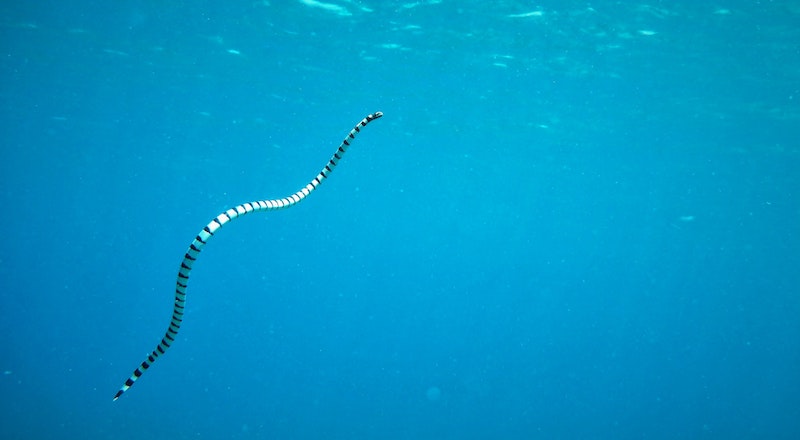Sea snakes in the UAE: how much danger do they pose?
This is not a cue to tag your ex…
Today on the What’s On wildlife hunt, we have our sights set on a slithery sort of character. What are known locally as ‘Bu jinn’ or ‘Bogni’ – sea snakes are an important part of the regional ecosystem.
The fact that they may be pulling their weight in the circle of life, still hasn’t convinced a certain percentage of the populace of their trustworthinesssssss, however. For some, coming face-to-amphibious-face with one of these creatures, whilst out for a casual dip at the beach, is pure unfiltered, straight-from-the-tap, nightmare fuel.
But are they venomous? How many of them are there out there *gulp* in the water? Should we be concerned? To clear up these and other queries, we spoke to a resident serpent specialist at The National Aquarium…

Where are we most likely to find sea snakes in the UAE?
Sea snakes are not very common in the UAE, however, they have been spotted in the Persian Gulf. There have been a few instances, where people have spotted them in the waters of Saadyiat, Marawah Marine Biosphere and Corniche, in Abu Dhabi. There have been no reports of mass sightings.
Do they pose any danger to humans?
They generally avoid interactions with humans and are not aggressive, unless provoked or threatened. However, due to the dangers of their venom, we do urge people to stay away from them if noticed. The venom leads to symptoms such as paralysis, and respiratory distress.
Are any of the local species facing a threat of extinction?
It is important to remember that habitat loss, pollution, climate change and bycatch (ed: this is where animals are caught accidentally as part of fishing practices and discarded) are an ongoing threat for all marine life.
What do sea snakes eat?
They usually eat fish and other small marine creatures like eels, gobies and small reef-dwelling fish.
What should people do if they see a sea snake?
Do not provoke or approach the snake, maintain a safe distance, leave the area, and report the sight to EAD by calling 800555.
What are your three favourite sea snake facts?
- Their body is specially adapted for life in the ocean, with a paddle-shaped tail for swimming, a valve in their nostril to prevent water going to their lungs while submerged, and salt glands to help to excrete the salt along with the kidneys.
- Their venom is considered the most powerful one among the snakes.
- They are ovoviviparous, which means they give birth to live young instead of laying eggs. The female retains her eggs inside her body until they hatch and give birth to fully developed offspring. This increases the chance of survival of the species.
For more information and safe, up-close interactions with The Gulf’s native sea snake species, head to The National Aquarium, Al Qana, Abu Dhabi, tickets from Dhs110. thenationalaquarium.ae
Images: Provided
